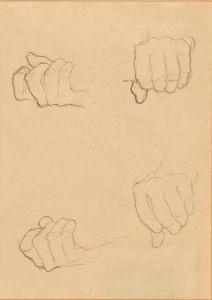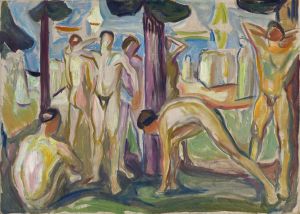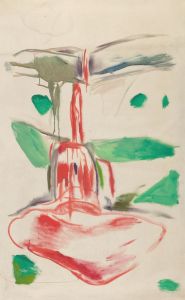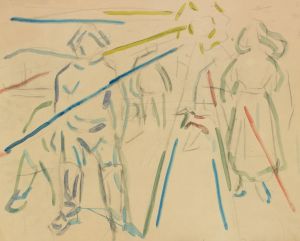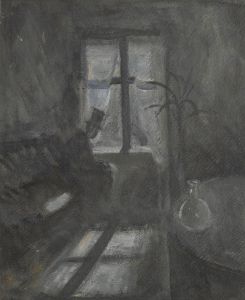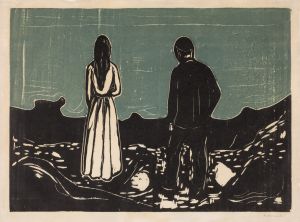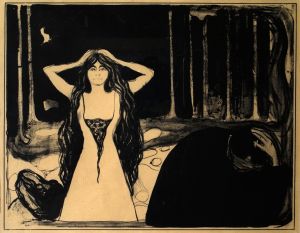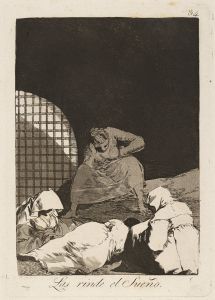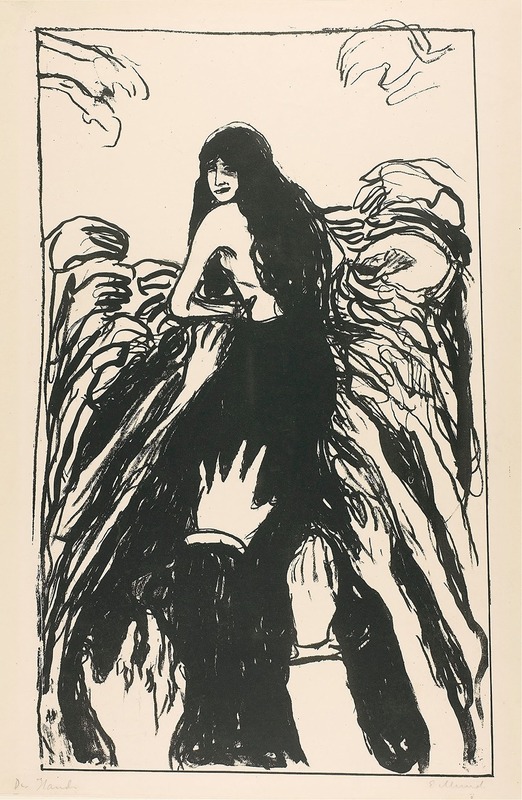
The Hands
A hand-painted replica of Edvard Munch’s masterpiece The Hands, meticulously crafted by professional artists to capture the true essence of the original. Each piece is created with museum-quality canvas and rare mineral pigments, carefully painted by experienced artists with delicate brushstrokes and rich, layered colors to perfectly recreate the texture of the original artwork. Unlike machine-printed reproductions, this hand-painted version brings the painting to life, infused with the artist’s emotions and skill in every stroke. Whether for personal collection or home decoration, it instantly elevates the artistic atmosphere of any space.
Edvard Munch, a Norwegian painter and printmaker, is renowned for his evocative and emotional works that often explore themes of existentialism, love, and death. One of his lesser-known works is "The Hands," a painting that, while not as famous as "The Scream," still reflects Munch's distinctive style and thematic concerns.
"The Hands" was created during a period when Munch was deeply engaged with the Symbolist movement, which sought to express the emotional and psychological states of the human experience through art. This movement was characterized by its use of symbolic imagery and a focus on the inner workings of the mind, often delving into themes of anxiety, fear, and desire.
In "The Hands," Munch employs his characteristic use of bold colors and expressive forms to convey a sense of tension and unease. The painting features a series of hands, which are depicted in a way that suggests movement and emotion. The hands appear to be reaching out, grasping, or perhaps even struggling, which can be interpreted as a representation of human connection or the lack thereof. This focus on hands is significant, as hands are often seen as symbols of action, communication, and interaction.
Munch's use of color in "The Hands" is particularly noteworthy. He often used color to evoke mood and emotion, and in this painting, the palette is both vibrant and somber, creating a sense of contrast and conflict. The interplay of light and shadow further enhances the emotional impact of the piece, drawing the viewer's attention to the hands and their dynamic positioning.
The painting reflects Munch's interest in exploring the complexities of human relationships and the psychological underpinnings of human behavior. This interest is a recurring theme in Munch's work, as seen in other paintings such as "The Dance of Life" and "The Kiss," where he delves into the intricacies of love, desire, and the passage of time.
Munch's personal life and experiences heavily influenced his artistic output. He faced numerous personal challenges, including the early death of his mother and sister, which left a profound impact on him and his work. These experiences are often reflected in the themes of loss and longing that permeate his art.
"The Hands" is a testament to Munch's ability to convey deep emotional and psychological states through his art. While it may not be as widely recognized as some of his other works, it nonetheless offers insight into his artistic vision and the Symbolist movement's broader themes.
Munch's legacy as a pioneer of modern expressionism is well-established, and his influence can be seen in the works of later artists who sought to explore the depths of human emotion and experience. "The Hands" is a compelling example of Munch's skill in using visual elements to communicate complex ideas and emotions, making it a valuable piece for understanding his contribution to the art world.







